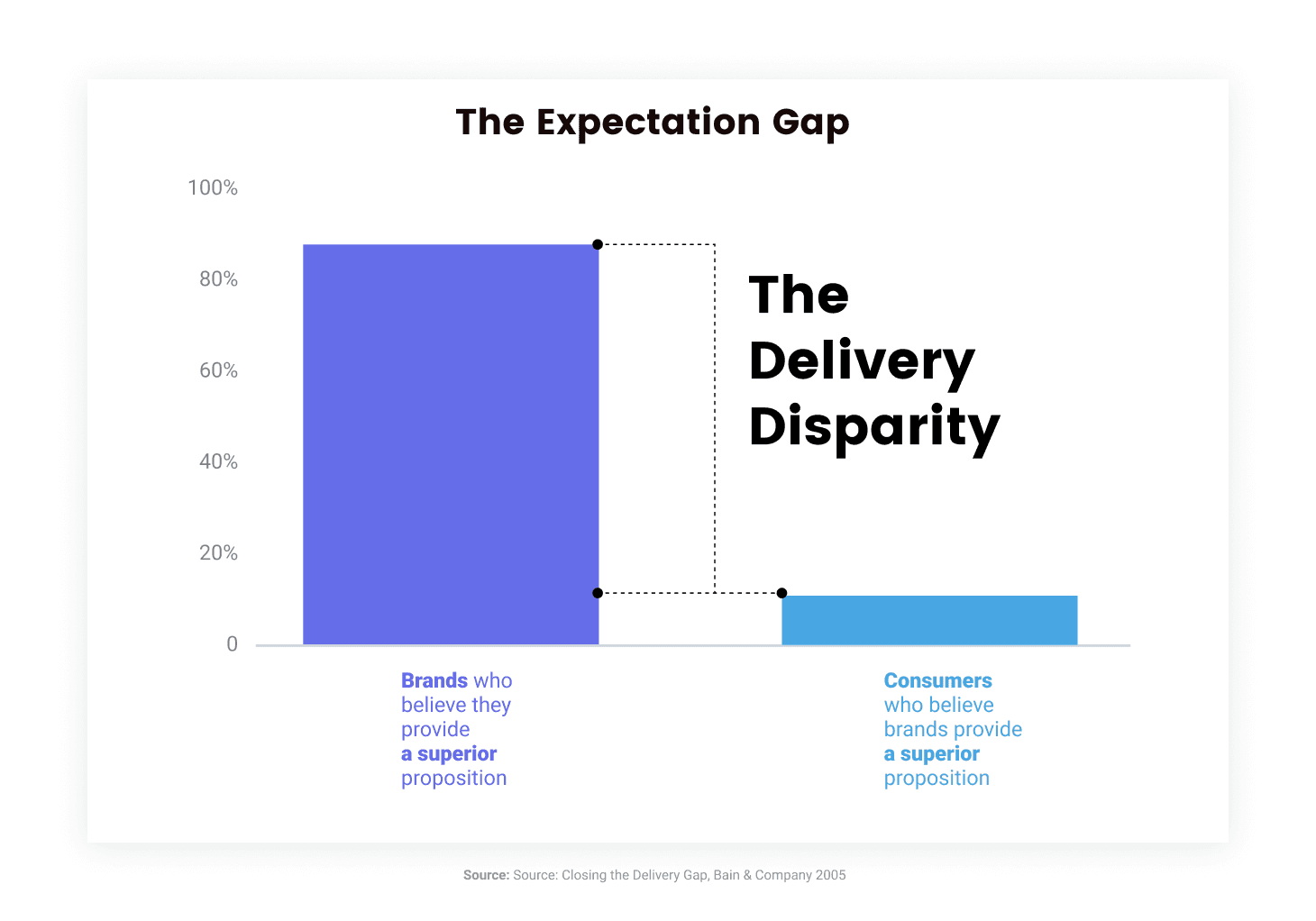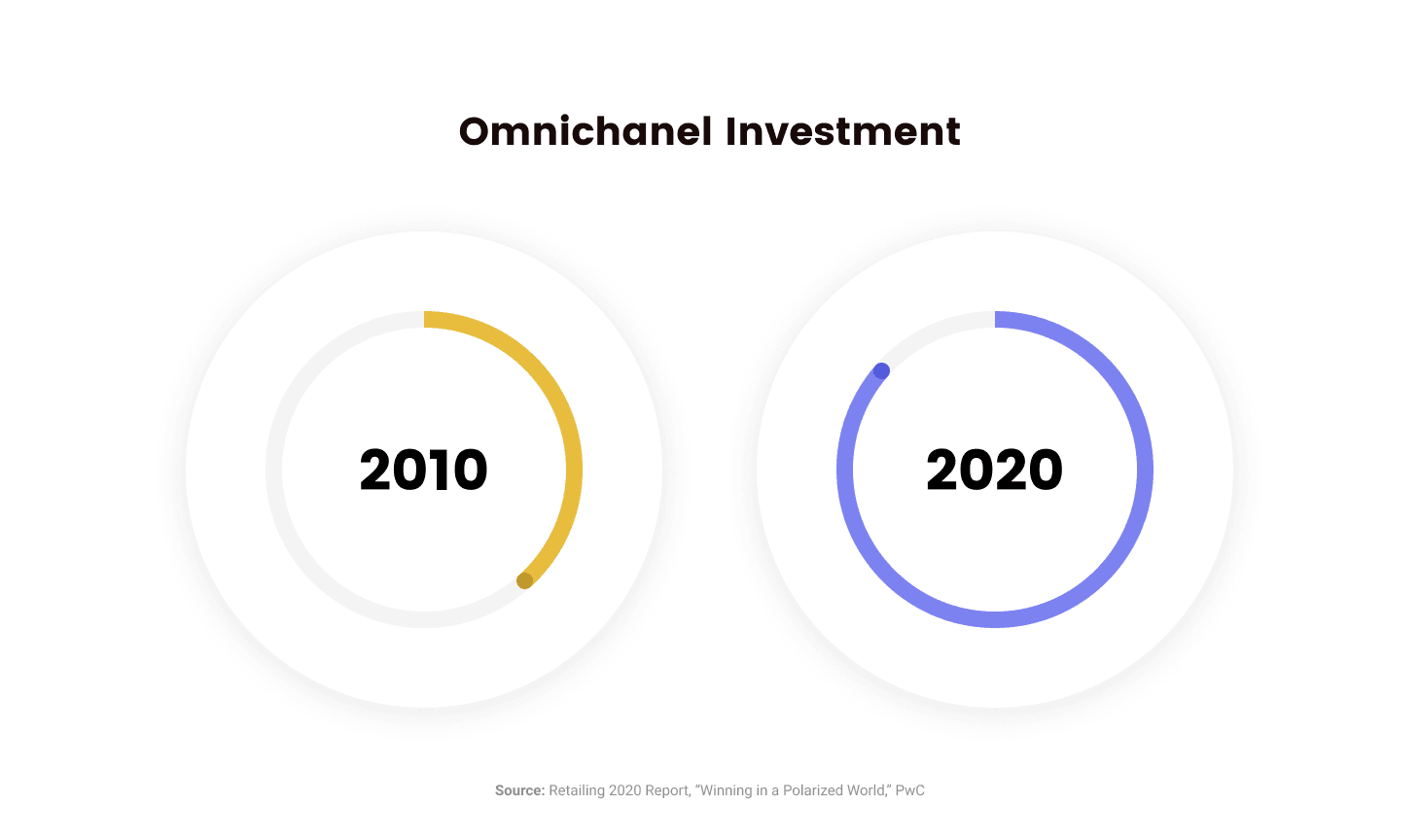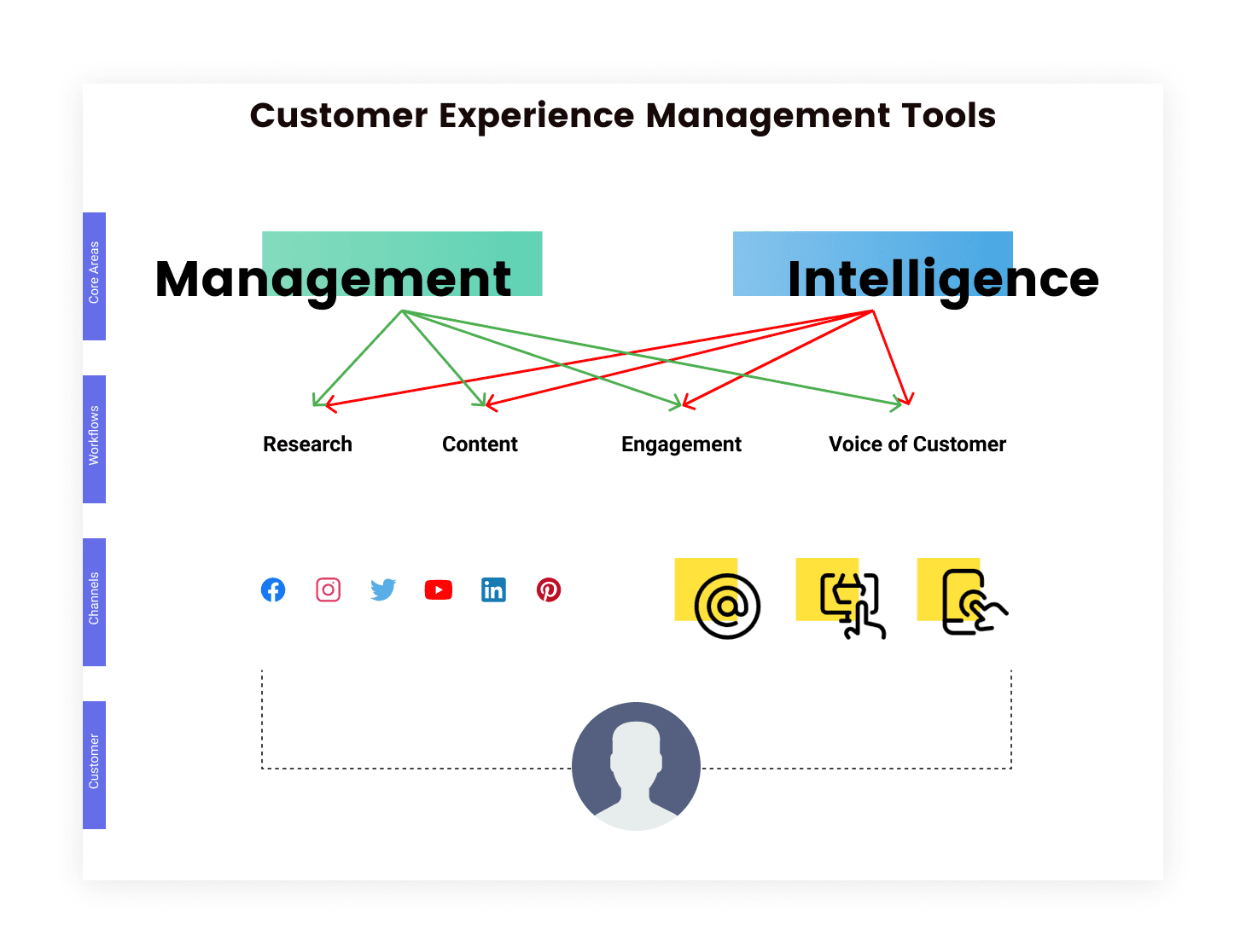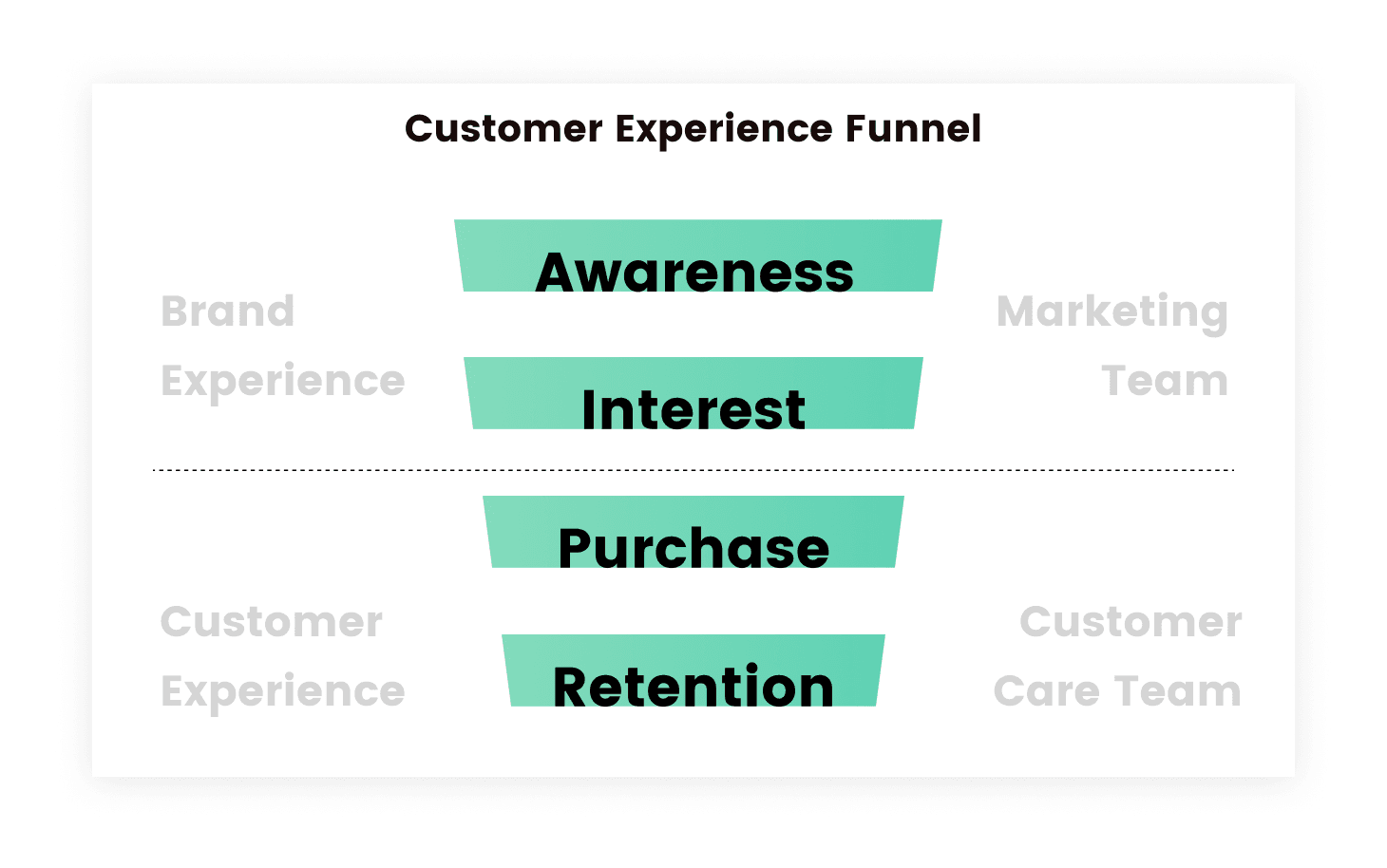It wasn’t actually that long ago that we, marketers, started paying careful attention to how our brand is experienced from the point of view of the customer. In just a few years, the need for the kind of marketers that specialize in having precisely that skill in customer experience management (CEM) has grown immensely.
This isn’t surprising. If you look across marketing and customer care departments, the two departments that are perhaps most customer-facing, there’s a vast number of functions that are now a part of it. The growth of those functions has been skyrocketed by tech that’s responsible for adding more customer touchpoints each year.
While both marketing and customer care teams can manage their individual functions, there didn’t used to be a role responsible for ensuring consistency between those functions – not until recently. In past years, roles like customer experience manager have seen a surge, and the role has even been brought into the C-Suite under the Chief Experience Officer (CXO) title.
This echoes the changes in the way we approach customers, marketing, and just business altogether. Deloitte coined this move as going “beyond marketing.”
Now, the key question to answer: what does this move actually mean for your business? This article covers everything you need to know.
Table of Contents
What Is customer experience management?
Customer experience management is the process of creating the best possible consumer interaction with your brand at any given touchpoint, be it social media, your web experience, app experience, customer care, or even how you invoice. It is the process that ensures that customer expectations are exceeded at every point, which can lead to increased consumer satisfaction, engagement, loyalty, and advocacy.
Experience management evolves across stages. It starts at the research phase, moves towards experience creation from the very first touchpoint with the consumer, then to the task of managing those experiences to the purchase and post-purchase stages, and ends, ultimately, with measuring their effectiveness. One caveat that’s often overlooked is that this spans across departments.
Customer experience management is the process that ensures that customer expectations are exceeded at every point so that they lead to increased consumer satisfaction, engagement, and loyalty.
Why Is customer experience management important?
First and foremost, what businesses absolutely want to avoid is what on the consumer end is felt as an expectation gap. In the experience management framework, it is referred to as the delivery disparity between what people expect from interacting with your brand (marketing, product, customer service, or anything else) vs. what they get.
From the business perspective, this challenge is operational and stems from the growing complexity of cross-departmental business functions that lead to inconsistencies in the customer experience they deliver.

The second reason is purely results-driven. In the current competitive digital environment that requires you to have omni-channel presence, you simply cannot afford to fail at customer experience.
PwC reported in 2020 that 80% of retailers were prioritizing their investment in omni-channel experiences.

In their research, Adobe found that companies that commit to strong focus on omni-channel engagement and improving those experiences witness a 10% YoY growth, a 10% growth in average order value, and a 25% increase in closed business.
So, what do you need to actually start improving your customer experiences?
Customer experience management software must-haves
To know exactly how you can start improving the customer experience in your company, it’s paramount to know what solutions you’ll need in order to cover every part of the process, from research to creation to implementation to measurement.
The software you’re using shouldn’t only allow you to cover each part of the process successfully, but it needs to be managed in one connected ecosystem in order to ensure a smooth customer journey experience from marketing to customer care. That’s from the moment someone discovers your brand in the earliest awareness stages of the funnel, to the journey point when that person is your customer and is in the retention stage of the funnel.
Working in one connected ecosystem allows all teams across departments to leverage data shared between touchpoints, which is first-party data that’s essential to knowing where your customer experiences exceed expectations and where there is a clear gap to close.
The chart below gives you a frame of reference for what kind of functionality you’ll need from your customer experience management software in order to be able to meet customer expectations on every channel.

You can divide those core functions between experience management and the process of gathering intelligence to create and manage those experiences in a way that meets all customer expectations.
Beyond that, there are key four components that ensure you have everything you need to succeed in the two core areas.
Research
Customer experience research provides the necessary knowledge about customer expectations and who they are for your marketing campaigns so that you can engage with your audiences in a way that will leave a desirable impression and drive the customer journey forward.
In the area of customer care, research informs your teams what exact needs your customers have so that you can be quick to respond in exactly the way they need you too or even before those issues are known to customers.
On a practical level, this requires research into several areas:
Your audience personas
Listening to your audiences and the audiences of your competitors
Analysis of all your omni-channel community conversations
Content
Content is what begins your brand customer journeys and drives them forward. You want your content to be informed by the research you’ve gathered, so that you can invest your time only in the marketing campaigns and content that will meet your audience’s interests.
This requires marketing solutions that will help you create a smooth process from content ideation to content creation and execution – a process that’s especially difficult because it spans across multiple teams like design, social media, and content marketing.
Engagement
Customer engagement refers to the management of customer interactions – both from the point of view of marketing and customer care. It starts with having a flawless execution strategy for your content across multiple channels that guides your audience to the customer care of the customer lifecycle.
The best customer experience management platforms should enable you to engage with your customers effectively across all channels at all stages of the journey. That means eliminating all the bottlenecks that often slow down the execution stage through AI-driven automation and campaign optimization, and also ensuring that every engagement that happens on the customer care part of the lifecycle delivers on the promise made in the earlier stages of the funnel.
Voice of customer
Voice of customer (VOC) allows you to get a granular understanding of just how well consumer expectations are met and what their exact preferences are. It allows you to constantly stay aligned with those expectations so that there’s consistency in the kind of experiences your business delivers.
Voice of customer measurement requires technology that can analyze multi-channel data quickly and translate it into actual steps you need to take in order to improve your customer experiences.
Data Is crucial for connected experiences
What usually leads to the highest gap in customer expectations is the disconnect between the marketing and customer care teams. The bridge to close it is first-party data.
The challenge is ensuring that all audience insights are passed from one part of the journey to the next. From the first insights that are available at the top of the funnel, the very first touchpoint often being social media, to the owned web pages where the interest and purchase intent are built, down to the post-purchase phase. It’s vital that the entire funnel is connected through data.

In practical terms and in the context of the customer experience management software environment, the bridge that connects the marketing teams and customer care teams is the data gathered through listening intelligence.
It turns reactive care, when customers have no choice but to contact you to resolve their issues, into proactive care, when your business is able to respond to issues before they hit support lines or to hold or accelerate campaigns based on such intelligence.
The takeaway
Taking a careful look at each touchpoint, whether it’s the customer experience on social media or customer engagement with your care agents on your website, can completely transform your business.
According to research by Adobe, experience-driven businesses excel at every point of the customer lifecycle. They gain 1.6x more brand awareness in the early stages of the funnel, 1.6x more new website visitors, and 1.6x more orders to buy.
As the amount of customer touchpoints grow, the complexity of customer experiences grows in parallel and it can seem overwhelming for businesses to really start mapping, measuring, and improving their experience all across the marketing funnel. The silver lining is that marketing technologies have been right at the cutting edge of this transformation and have already been enabling the “beyond marketing” change across businesses.
The next experience-driven business could be yours. Speak to an Emplifi expert to learn how you can easily transform your omni-channel customer experiences. Get in touch today!
























